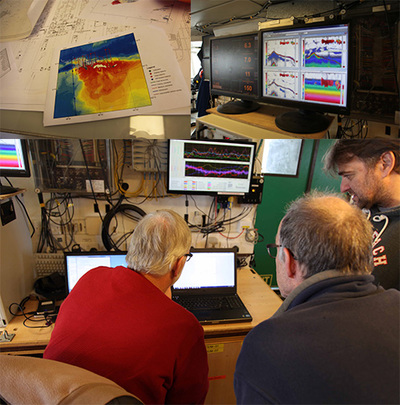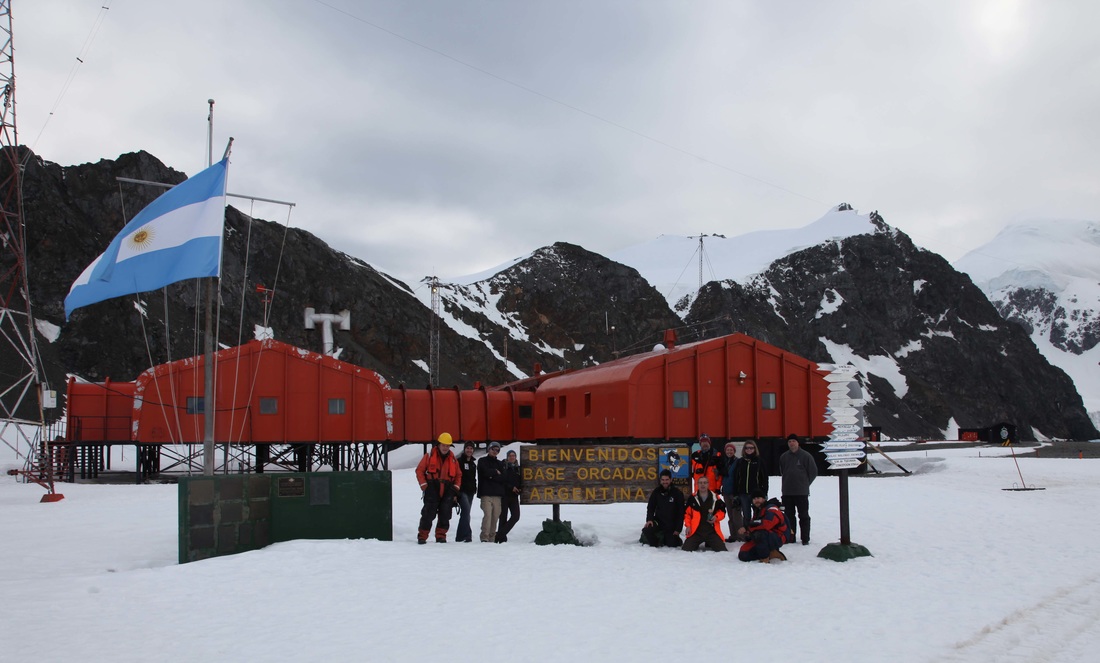|
José Xavier e José Seco Para vir à Antártida é preciso estar em forma! Isto é realmente muito importante pois neste ambiente agreste todas as atividades exigem mais do nosso corpo. Temos de trabalhar ciclos de horas muito intensivos, de carregar equipamentos, de subir e descer escadas, correr literalmente de um lado para o outro. Assim, aqui no navio James Clark Ross, um dos oficiais organiza os “circuitos” de exercício, ou seja, grupo de exercícios que se tem de repetir em estações. Por exemplo, temos uma estação onde se faz levantamento de pesos, outra de flexões, outra de abdominais...e fazemos um ciclo de 3 minutos em cada estação. Depois fazemos tudo de novo para 2 minutos e 1 minuto, sempre a aumentar a intensidade! No fim, estamos cansados mas com um sorriso na cara. Depois do treino tomamos um duche e voltamos para o trabalho! To come to the Antarctic, i tis truly important to be in shape! Yes, it does matter. We have to work long hours, carry heavy equipment, go up and down the stairs endless times, literally runnig everywhere while we are on our shift. Therefore, being healthy does help to maximize your ability to work and enjoy more. Here, at the James Clark Ross, one of the officers organizes “circuits” 3 times a week. “Circuits” is a group of exercises that you have to repeat in stations. For example, in one station you have to do squats, another burpess and starman exercises... we stay initially 3 minutes in each station, moving from one to aonther, until completing all stations. Then do everything again, for 2 minutes, and then for 1 minute. At the end, we are pretty tired but with a big smile in our faces. Nestes últimos 2 dias temos estado a fazer uma sondagem da abundância do camarão do Antártico num canhão (similar ao canhão marinho da Nazaré), onde a profundidade aumenta muito rapidamente (na perspectiva de quem olha de terra), o que torna estes locais em habitats perfeitos para muitos organismos marinhos. Estes dados têm sido recolhidos por sondas com várias frequências (como as frequências das estações dos nossos rádios) para detetar cardumes dos vários organismos. Está região tem sido também visitada pelos predadores que estamos a estudar (otárias do Antártico, pinguins de barbicha e pinguins Gentoo). Hoje colocámos uma MOORING (aparelhos estáticos que ficam na coluna de água, ancorados ao fundo do mar, virado para a superfície para registar todos os organismos que por lá passam, assim ficamos a saber a sua abundância) que deverá ficar a operar por vários meses/anos. Todos estes aparelhos foram verificados e calibrados. In the last two days, we have been carrying out abundance surveys in a certain marine canyon, a region in which depth increases rapidly (from the perspective from whom is viewing it from land)and it known to aggregate a lot of marine organisms, both including Antarctic krill but also top predators that we have been tracking. Today we deployed a MOORING (a static equipment that is attached to the bottom, to detect organisms in the water column) that will be operating for months/years. All these equipments were tested and calibrated previously to make sure we collect good information. A calibração das sondas foram feitas este ano na Baia de Scotia (Ilha de Laurie, que pertence às Ilhas Orcadas). Nesta Baia fica a Base Argentina Orcadas, que tivemos o privilégio de visitar. Aliás, esta Base é a primeira Base científica na Antártida, que recolhe dados metereológicos continuamente desde 1904 (aquando da expedição Escocesa nestas ilhas). The calibration of these devices were carried out this year at Scotia Bay (Laurie Island, South Orkneys), in front of the Orcadas Research Base of Argentina. We happily went for a quick visit to see the oldest part of the Base, that is the first in the Antarctic. It has been recording metereological data since 1904, initially collected during the frist Scottish Antarctic Expedition. Próximos passos: usar redes científicas de pesca RMT25 (Arrasto pelágico rectangular de 25 m2) para apanhar peixes, lulas e crustáceos. É a maior rede a bordo!!!!
O que será que vamos encontrar? Next steps: Deploy RMT25 nets (the biggest we have onboard) to catch fish, squid and crustaceans. What shall we find? Getting excited!!! Os comentários estão fechados.
|
BLOGS DAS CAMPANHAS
|




 Feed RSS
Feed RSS
